עוד בפרק זה:
אוקטובר 2019
הספרייה מציעה לקוראיה מידי חודש רשימת ספרים וכתבי-עת חדשים שנוספו לאוספיה כל רשומה מכילה:
מס' מיון, מחבר, כותר, מוציא לאור, שנת הוצאה , נושאים, מס' מערכת תוכן עיניינים ותקציר.
כדי לראות מצב ההשאלות יש ללחוץ על כותר.
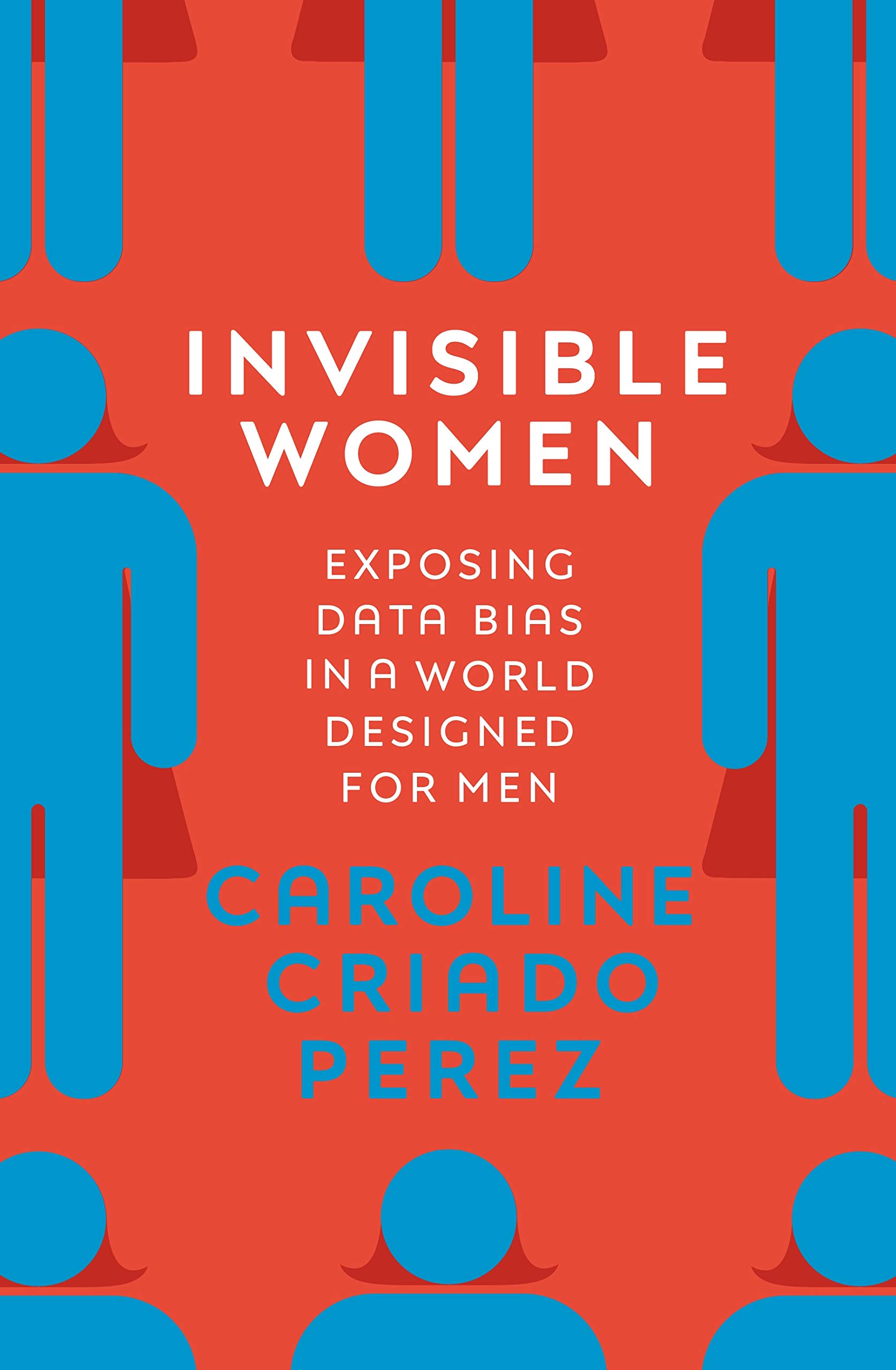 |
316.346.2 CRI Criado-Perez, Caroline Invisible women : exposing data bias in a world designed for men London : Chatto & Windus, [2019]. Contents Preface -- Introduction: the default male -- Part I: Daily life -- Chapter 1: Can snow-clearing be sexist? -- Chapter 2: Gender neutral with urinals -- Part II: The workplace -- Chapter 3: The long friday -- Chapter 4: The myth of meritocracy -- Chapter 5: The Henry Higgins effect -- Chapter 6: Being worth less than a shoe -- Part III: Design -- Chapter 7: The plough hypothesis -- Chapter 8: One-size-fits-men -- Chapter 9: A sea of dudes -- Part IV: Going to the doctor -- Chapter 10: The drugs don’t work -- Chapter 11: Yentl syndrome -- Part V: Public life -- Chapter 12: A costless resource to exploit -- Chapter 13: from purse to wallet -- Chapter 14: Women’s rights are human rights -- Part VI: When it goes wrong -- Chapter 15: Who will rebuild? -- Chapter 16: It’s not the disaster that kills you -- Afterword -- Acknowledgements -- Endnotes -- Index. Abstract Welcome to the Gender Data Gap. Our world is largely built for and by men, in a system that can ignore half the population. This book will tell you how and why this matters In her new book, Invisible Women, award-winning campaigner and writer Caroline Criado Perez shows us how, in a world largely built for and by men, we are systematically ignoring half the population. She exposes the gender data gap - a gap in our knowledge that is at the root of perpetual, systemic discrimination against women, and that has created a pervasive but invisible bias with a profound effect on women’s lives. Caroline brings together for the first time an impressive range of case studies, stories and new research from across the world that illustrate the hidden ways in which women are excluded from the very building blocks of the world we live in, and the impact this has on their health and wellbeing. From government policy and medical research, to technology, workplaces, urban planning and the media - Invisible Women exposes the biased data that excludes women. In making the case for change, this powerful and provocative book will make you see the world anew. Subject Sex discrimination against women. Male domination (Social structure) Social sciences -- Research. Sex role -- Research -- Methodology. 43053
|
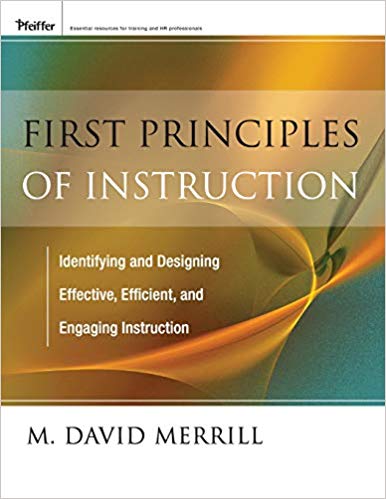 |
371.31 MER Merrill, M. David San Francisco, California : Pfeiffer, [2013]. Contents List of figures and tablesOnline premium contentAcknowledgementsPrefacePart 1: Identifying E3 instructionChapter 1; What are the problems with instruction?Chapter 2; First principles of instruction Chapter 3; Instructional contentChapter 4; Instructional interactionChapter 5; Instructional strategiesChapter 6; Instructional Strategies for problem-solvingChapter 7; Problem-centered instructional strategyChapter 8; Enhancing instructional strategies with structural frameworks and learner interaction Chapter 9; Multimedia implementation of instructional strategiesChapter 10; Critiquing instructional strategies in existing instructionPart II : Designing E3 instructionChapter 11; A pebble-in-the-pond model for instructional designChapter 12; Designing functional prototypesChapter 13; Design a problem prototypeChapter 14; Design a problem progressionChapter 15; Design strategies for component skillsChapter 16; Design structural framework and peer-interaction strategy enhancementsChapter 17; Finalize the functional prototypeChapter 18; Design assessment and evaluationChapter 19; The pebble-in-the-pond instructional design checklistPart III : Support for first principles of instructionChapter 20; Indirect support for first principles of instructionsChapter 21; Direct research support for first principles of instruction Chapter 22; First principles of instruction and the future Abstract This handy resource describes and illustrates the concepts underlying the “First Principles of Instruction” and illustrates First Principles and their application in a wide variety of instructional products. The book introduces the e3 Course Critique Checklist that can be used to evaluate existing instructional product. It also provides directions for applying this checklist and illustrates its use for a variety of different kinds of courses. The Author has also developed a Pebble-in-the-Pond instructional design model with an accompanying e3 ID Checklist. This checklist enables instructional designers to design and develop instructional products that more adequately implement First Principles of Instruction. Subject Instructional systems -- Design. Educational technology 43055
|
 |
51(076) גור גורן, בני מתמטיקה (5 יחידות לימוד) : חלק ו’: שאלון 035006 / מהדורה חדשה ומעודכנת [תל-אביב] : המחבר, [2000?]. Contents אלגברה, טריגונומטריה וחשבון דיפרנציאלי ואינטגרלי Subject Mathematics -- Study and teaching (Secondary) Mathematics -- Problems, exercises, etc. Algebra -- Problems, exercises, etc. Trigonometry -- Problems, exercises, etc 43140
|
 |
51 גבע גבע, יואל מתמטיקה : שאלונים 035806 (כיתה יא’) : 5 יחידות לימומד ראשון-לציון : יואל גבע, [2011] Contents כרך ג: בעיות מילוליות / ערך מוחלט / סדרות / אינדוקציות / גיאומטריה / טריגונומטריה -- כרך ד: חשבון דיפרנציאלי ואינטגרלי / הסתברות / מבחני חזרה Abstract ספר זה הוא הספר הראשון בסדרת ספרי המתמטיקה של הוצאת "יואל גבע" המתאים לתוכנית ההיבחנות החדשה ... בספר זה, שנכתב על פי הנחיות והמלצות הפיקוח על המתמטיקה, תמצאו הסברים מפורטים, דוגמאות פתורות של כל סוגי התרגילים וכמות גדולה ומגוונת של תרגילים בכל אחד מהתחומים הנלמדים. בכתיבת ספר זה הקפדנו בכל נושא על המדרג מן הקל אל הכבד. כמו כן, הבאנו בחשבון את המגמה של הפיקוח להוראת המתמטיקה להעלות את רמת הדרישות. בהתאם לכך, הבאנו מגוון של תרגילים הכוללים אוריינות מתמטית וכן צירפנו את כל השאלות שהופיעו בבחינות הבגרות בנושאים המופיעים בספר. - מתוך הסבר למורה ולתלמיד Subject Mathematics -- Study and teaching (Secondary) Mathematics -- Examinations, questions, etc. Mathematics -- Problems, exercises, etc. Geomerty -- Study and teaching (Secondary) 43133
|
 |
574(1-21) UND Understanding urban ecosystems : a new frontier for science and education New York : Springer, [2003].
Contents Introduction: Ecosystem Understanding Is a Key to Understanding Cities / Charles H. Nilon, Alan R. Berkowitz, and Karen S. Hollweg -- The Importance of Understanding Urban Ecosystems: Themes / Alan R. Berkowitz, Charles H. Nilon, and Karen S. Hollweg -- Why Is Understanding Urban Ecosystems an Important Frontier for Education and Educators? / Karen S. Hollweg, Celestine H. Pea, and Alan R. Berkowitz -- The Role of Understanding Urban Ecosystems in Community Development / Jack K. Shu -- Why Is Understanding Urban Ecosystems Important to People Concerned About Environmental Justice? / Bunyan Bryant and John Callewaert -- Why Is Developing a Broad Understanding of Urban Ecosystems Important to Science and Scientists? / Stewart T.A. Pickett -- Foundations and Frontiers from the Natural and Social Sciences: Themes / Charles H. Nilon, Alan R. Berkowitz, and Karen S. Hollweg -- Natural Ecosystems in Cities: A Model for Cities as Ecosystems / Anthony D. Bradshaw -- An Ecosystem Approach to Understanding Cities: Familiar Foundations and Uncharted Frontiers / Nancy B. Grimm, Lawrence J. Baker, and Diane Hope -- Understanding Urban Ecosystems: An Ecological Economics Perspective / William E. Rees -- Social Science Concepts and Frameworks for Understanding Urban Ecosystems / Carolyn Harrison and Jacquie Burgess -- The Future of Urban Ecosystem Education from a Social Scientist’s Perspective: The Value of Involving the People You Are Studying in Your Work / John B. Wolford -- A Social Ecology Approach to Understanding Urban Ecosystems and Landscapes / J. Morgan Grove, Karen E. Hinson, and Robert J. Northrop -- The Historical Dimension of Urban Ecology: Frameworks and Concepts / Martin V. Melosi -- Urban Ecosystems, City Planning, and Environmental Education: Literature, Precedents, Key Concepts, and Prospects / Anne Whiston Spirn -- A Human Ecology Model for the Tianjin Urban Ecosystem: Integrating Human Ecology, Ecosystem Scien Abstract Nowhere on Earth is the challenge for ecological understanding greater, and yet more urgent, than in those parts of the globe where human activity is most intense - cities. People need to understand how cities work as ecological systems so they can take control of the vital links between human actions and environmental quality, and work for an ecologically and economically sustainable future. An ecosystem approach integrates biological, physical and social factors and embraces historical and geographical dimensions, providing our best hope for coping with the complexity of cities. This book is a first of its kind effort to bring together leaders in the biological, physical and social dimensions of urban ecosystem research with leading education researchers, administrators and practitioners, to show how an understanding of urban ecosystems is vital for urban dwellers to grasp the fundamentals of ecological and environmental science, and to understand their own environment. Subject Urban ecology (Sociology) Ecosystem management Biotic communities -- Study and teaching 42878
|
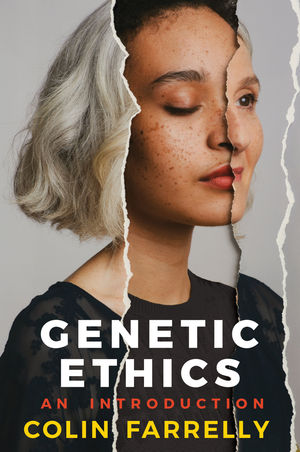 |
575 FAR Farrelly, Colin Genetic ethics : an introduction Cambridge ; Medford : Polity, [2018]. Contents Eugenics : inherently immoral? -- The genetic revolution : a snapshot -- Disease -- Epigenetics -- Reproductive freedom -- Aging research and longevity -- Happiness, memory and behaviour. Abstract Colin Farrelly contemplates the various ethical and social quandaries raised by the genetic revolution. Recent biomedical advances such as genetic screening, gene therapy and genome editing might be used to promote equality of opportunity, reproductive freedom, healthy aging, and the prevention and treatment of disease. But these technologies also raise a host of ethical questions: Is the idea of “genetically engineering” humans a morally objectionable form of eugenics? Should parents undergoing IVF be permitted to screen embryos for the sex of their offspring? Would it be ethical to alter the rate at which humans age, greatly increasing longevity at a time when the human population is already at potentially unsustainable levels? Farrelly applies an original virtue ethics framework to assess these and other challenges posed by the genetic revolution. Chapters discuss virtue ethics in relation to eugenics, infectious and chronic disease, evolutionary biology, epigenetics, happiness, reproductive freedom and longevity. This fresh approach creates a roadmap for thinking ethically about technological progress that will be of practical use to ethicists and scientists for years to come. Accessible in tone and compellingly argued, this book is an ideal introduction for students of bioethics, applied ethics, biomedical sciences, and related courses in philosophy and life sciences. Subject Human genetics Human genetics -- Moral and ethical aspects. Genetic engineering -- Moral and ethical aspects 43114
|
 |
575 SCH Christian Patrick Schaaf, Johannes Zschocke, Lorraine Potocki. Human genetics : from molecules to medicine Philadelphia : Wolters Kluwer/Lippincott Williams & Wilkins Health, [2012]. Contents I The biological basis of human genetics -- II The clinical basis of human genetics -- III Clinical genetics -- IV Approaches to clinical problems -- V Living with genetic disorders: patient reports. Abstract Human Genetics: From Molecules to Medicine provides balanced coverage of molecular and clinical genetics for the preclinical medical student with relevant examples of the application of basic science to clinical medicine. With its unique, systems-based approach ideal for integrated curricula, the text guides students through their genetics, pediatrics, and medicine rotations and will also be helpful as a pocket resource for residents in pediatrics, internal medicine, family medicine, and obstetrics. Content has been carefully adapted from the critically acclaimed German text for the English language audience. Subject Human genetics Medical genetics. 43115
|
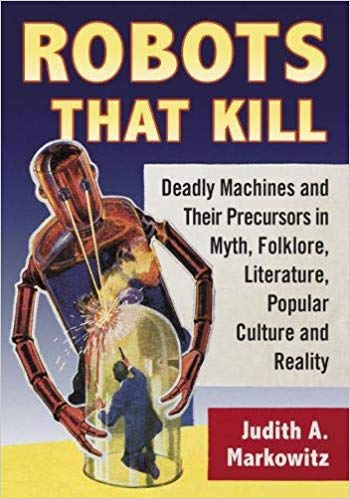 |
621-523 MAR Markowitz, Judith A. Jefferson, North Carolina : McFarland & Company, Inc., Publishers, [2019]. Contents Revenge -- Greed -- Furor : Robots as job killers -- Criminals -- Enforcers -- Superheroes & supervillains -- Furor : Making robots moral -- Humanoids -- Non-humanoids -- Humans -- Furor : LAWS. Abstract "This book describes the technologies that enable real-world robots and drones to be effective killers, including an overview of how artificial intelligence and nanotechnology relate to the topic. It also examines social controversies swirling around the design and use of killer robots"-- Provided by publisher. Subject Robots Robots -- Moral and ethical aspects. Robots -- Social aspects. Robots -- Folklore. Robots in literature. 42930
|
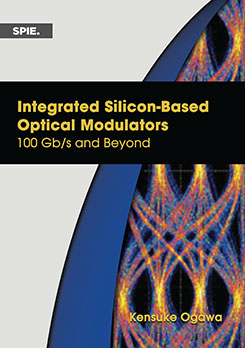 |
E78.5 OGA Ogawa, Kensuke Integrated silicon-based optical modulators : 100 Gb/s and beyond Bellingham, Washington, USA : SPIE Press, [2019] Contents Backgrounds -- Introduction to integrated optical modulators -- Optical circuits and waveguides in integrated Mach-Zehnder optical modulators -- Electronic and optoelectronic properties of high-speed phase shifters -- Oprtical, electrical, and electro-optical characteristics of integrated silicon-based optical modulators -- Transmission characteristics of integrated silicon-based optical modulators -- Photonic-electronic integration with silicon-based optical modulators. Abstract This book discusses the principles and the latest progress of silicon optical modulators as cutting-edge integrated photonic devices on silicon-photonic platforms, which play key roles in modern optical communications with low power consumption, small footprints, and low manufacturing costs. Silicon Mach-Zehnder optical modulators are emphasized as the principal small-footprint optical modulator because of their superior performance in high-speed optical modulation at operational temperatures beyond 100 degrees Celsius without power-consuming thermo-electric cooling in spectral bands over 100 nm. Subject Light modulators Silicon -- Optical properties Integrated optics 42907
|
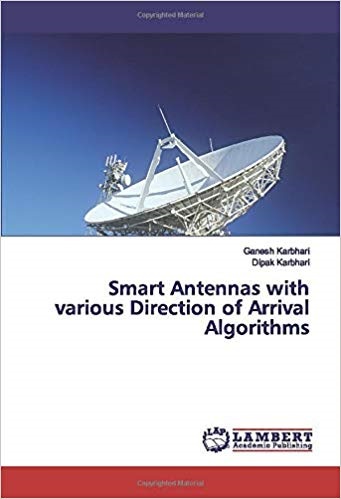 |
E96.67 KAR Ganesh Karbhari, Dipak Karbhari. Smart antennas with various direction of arrival algorithms Mauritius : LAP LAMBERT Academic Publishing, [2019] Abstract Smart antennas (also known as adaptive array antennas, digital antenna arrays, multiple antennas and, recently, MIMO) are antenna arrays with smart signal processing algorithms used to identify spatial signal signatures such as the direction of arrival (DOA) of the signal, and use them to calculate beamforming vectors which are used to track and locate the antenna beam on the mobile/target. Smart antennas should not be confused with reconfigurable antennas, which have similar capabilities but are single element antennas and not antenna arrays. Smart antenna techniques are used notably in acoustic signal processing, track and scan radar, radio astronomy and radio telescopes, and mostly in cellular systems like W-CDMA, UMTS, and LTE. Smart antennas have many functions: DOA estimation, beamforming, interference nulling, and constant modulus preservation. Subject Adaptive antennas Antennas (Electronics) Smart structures Wireless communication systems 43128
|
 |
E96.67 LUO Qi Luo, and Steven Gao, Wei Liu, Chao Gu. Hoboken, New Jersey : Wiley, [2019] Contents Introduction to smart antennas -- Beamforming algorithms for smart antennas -- Electronically steerable parasitic array -- Beam-reconfigurable antennas using active frequency selective surfaces -- Beam reconfigurable reflectarrays and transmitarrays -- Compact mimo antenna systems -- Other types of low-cost smart antennas. Abstract Traditional smart antenna systems are costly, consume great amounts of power and are bulky size. Low-cost Smart Antennas offers a guide to designing smart antenna systems that are low cost, low power, and compact in size and can be applied to satellite communications, radar and mobile communications. The authors — noted experts on the topic — provide introductions to the fundamental concepts of antennas, array antennas and smart antennas. The book fills a gap in the literature by presenting the design techniques of low-cost radio frequency (RF) smart antennas as well as approaches for implementing the hardware of the antenna and the beamforming network (BFN). A comprehensive and accessible book, Low-cost Smart Antennas not only presents an up-to-date review of the topic but includes illustrative case studies that contain in-depth explorations of the theory and technology of smart antennas. While other resources highlight the software (signal processing algorithms), this book is unique by focusing on the antenna hardware. This important book: •Offers an introduction to the most recent developments of the design of low-cost smart antennas and their applications •Presents a unique book that puts the focus on antenna hardware •Includes a variety of case studies that clearly demonstrate the implementation of current design techniques •Introduces both fundamental theories as well as more advanced topics Written for students and researchers and antenna engineers, Low-cost Smart Antennas explores the most recent advances in the field with an emphasis on antenna hardware. Subject Adaptive antennas Antennas (Electronics) Smart structures Wireless communication systems 43127
|
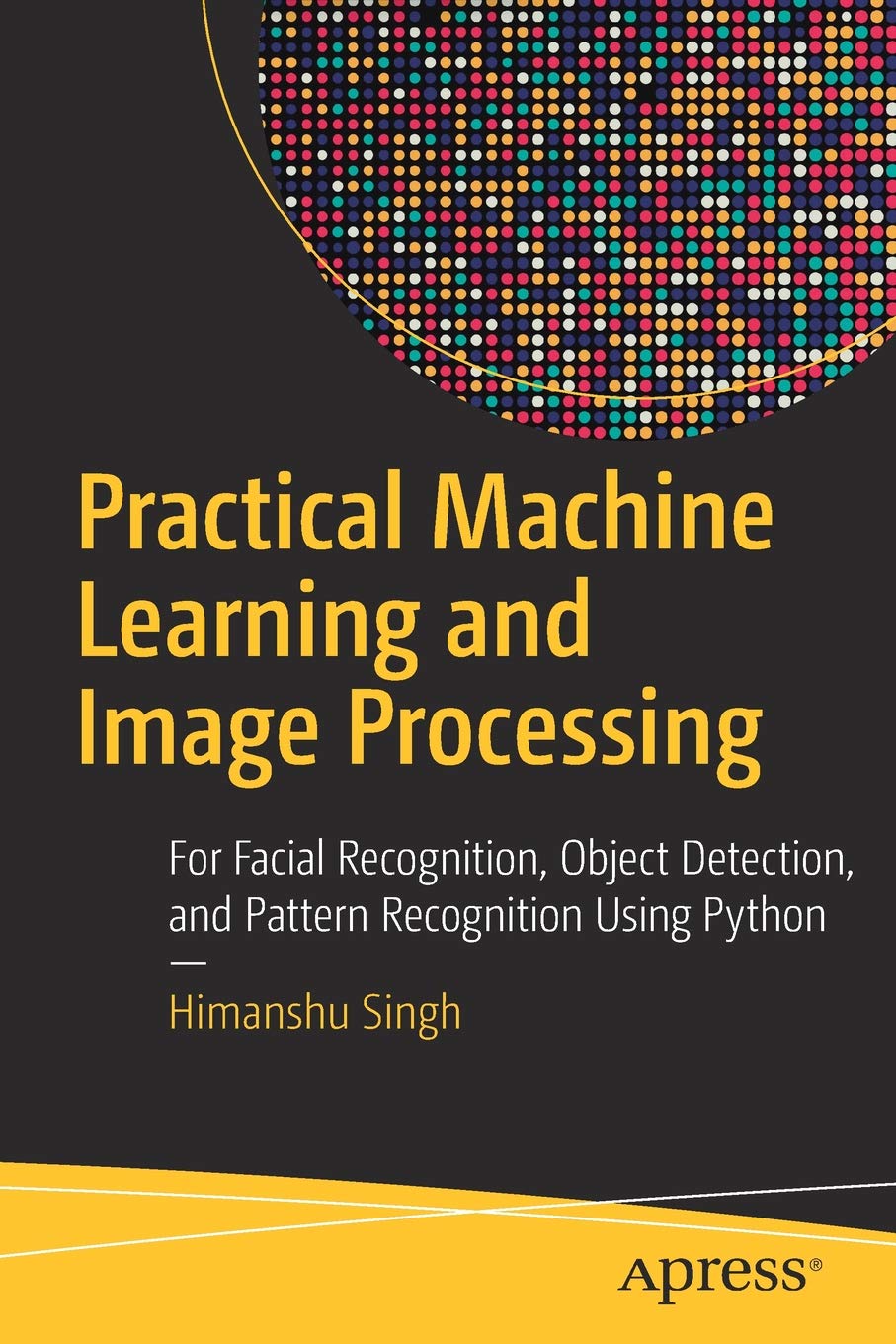 |
681.3AI.7 SIN Singh, Himanshu [Berkeley, California] : Apress, [2019]. Contents Setup environment -- Introduction to image processing -- Basics of Python and SciKit Image -- Advanced image processing using OpenCV -- Image processing using machine learning -- Real-time use cases -- Appendix: Important concepts and terminology. Abstract Gain insights into image-processing methodologies and algorithms, using machine learning and neural networks in Python. This book begins with the environment setup, understanding basic image-processing terminology, and exploring Python concepts that will be useful for implementing the algorithms discussed in the book. You will then cover all the core image processing algorithms in detail before moving onto the biggest computer vision library: OpenCV. You?ll see the OpenCV algorithms and how to use them for image processing. The next section looks at advanced machine learning and deep learning methods for image processing and classification. You?ll work with concepts such as pulse coupled neural networks, AdaBoost, XG boost, and convolutional neural networks for image-specific applications. Later you?ll explore how models are made in real time and then deployed using various DevOps tools. All the concepts in Practical Machine Learning and Image Processing are explained using real-life scenarios. After reading this book you will be able to apply image processing techniques and make machine learning models for customized application. You will: Discover image-processing algorithms and their applications using Python Explore image processing using the OpenCV library Use TensorFlow, scikit-learn, NumPy, and other libraries Work with machine learning and deep learning algorithms for image processing Apply image-processing techniques to five real-time projects. Title Sub. Python (Computer program language) Subject Machine learning Image processing -- Digital techniques. Optical data processing 42941
|
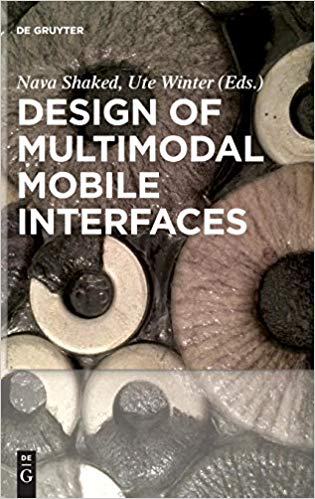 |
681.3.015 DES Design of multimodal mobile interfaces Boston ; Berlin : De Gruyter, [2016]. Contents 1. Introduction to the evolution of mobile multimodality -- 2. Integrating natural language resources in mobile applications -- 3. Omnichannel natural language -- 4. Wearable computing -- 5. Spoken dialog systems adaptation for domains and for users -- 6. The use of multimodality in avatars and virtual agents -- 7. Managing interaction with an in-car infotainment system -- 8. Towards objective method in display design -- 9. Classification and organization of information. Abstract The "smart mobile" has become an essential and inseparable part of our lives. This powerful tool enables us to perform multi-tasks in different modalities of voice, text, gesture, etc. The user plays an important role in the mode of operation, so multimodal interaction provides the user with new complex multiple modalities of interfacing with a system, such as speech, touch, type and more. The book will discuss the new world of mobile multimodality, focusing on innovative technologies and design which create a state-of-the-art user interface. It will examine the practical challenges entailed in meeting commercial deployment goals, and offer new approaches to the designing such interfaces. A multimodal interface for mobile devices requires the integration of several recognition technologies together with sophisticated user interface and distinct tools for input and output of data. The book will address the challenge of designing devices in a synergetic fashion which does not burden the user or to create a technological overload. Subject Multimodal user interfaces (Computer systems) Mobile computing. 42931
|
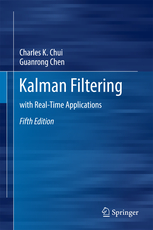 |
681.5.015.44 CHU Chui, Charles K. Kalman filtering : with real-time applications / Fifth edition Cham, Switzerland : Springer, [2017]. Contents Preliminaries -- Kalman Filter: An Elementary Approach -- Orthogonal Projection and Kalman Filter -- Correlated System and Measurement Noise Processes -- Colored Noise Setting -- Limiting Kalman Filter -- Sequential and Square-Root Algorithms -- Extended Kalman Filter and System Identification -- Decoupling of Filtering Equations -- Kalman Filtering for Interval Systems -- Wavelet Kalman Filtering -- Distributed Estimation on Sensor Networks -- Notes -- Answers and Hints to Exercises. Abstract This new edition presents a thorough discussion of the mathematical theory and computational schemes of Kalman filtering. The filtering algorithms are derived via different approaches, including a direct method consisting of a series of elementary steps, and an indirect method based on innovation projection. Other topics include Kalman filtering for systems with correlated noise or colored noise, limiting Kalman filtering for time-invariant systems, extended Kalman filtering for nonlinear systems, interval Kalman filtering for uncertain systems, and wavelet Kalman filtering for multiresolution analysis of random signals. Most filtering algorithms are illustrated by using simplified radar tracking examples. The style of the book is informal, and the mathematics is elementary but rigorous. The text is self-contained, suitable for self-study, and accessible to all readers with a minimum knowledge of linear algebra, probability theory, and system engineering. Over 100 exercises and problems with solutions help deepen the knowledge. This new edition has a new chapter on filtering communication networks and data processing, together with new exercises and new real-time applications. Subject Kalman filtering 43106
|
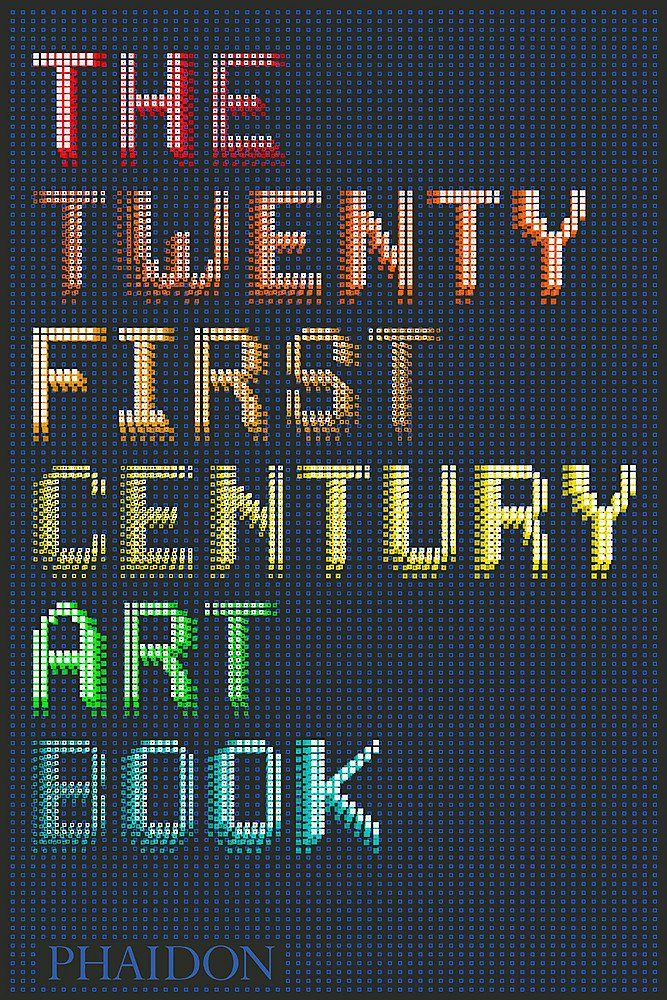 |
7.036 TWE London : Phaidon Press, [2014] Abstract The 21st‐Century Art Book is an A‐to‐Z guide of contemporary artists featuring established art‐world figures – Maurizio Cattelan, Cindy Sherman, Jeff Wall – alongside rising stars of the next generations. Global in scope, the book features work from 50 countries across a variety of mediums, from painting, drawing, and sculpture to digital art, video installation, and performance. Each of the 280 artists included has a dedicated page pairing a significant artwork from his or her oeuvre with lively and informative text. An international directory of major art events along with a helpful glossary round out the package, making this both a must‐have resource and a beautifully illustrated celebration of contemporary art. Subject Art, Modern -- 21st century. Artists -- 21st century. Art -- 21st century. 43102
|
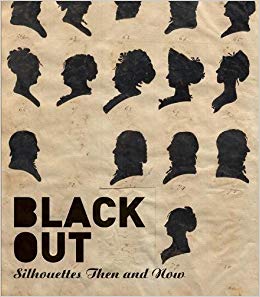 |
741.7(73) NAE Naeem, Asma Black out : silhouettes then and now Princeton, New Jersey : Princeton University Press, [2018] Contents Director’s foreword / Kim Sajet -- Introduction / Asma Naeem -- Black out : silhouettes then and now / Asma Naeem -- Without a trace : the art and life of Martha Ann Honeywell / Alexander Nemerov -- "Interesting characters by the lines of their faces" : Moses Williams’s profile portrait silhouettes of Native Americans / Gwendolyn DuBois Shaw -- Shades of black and white : American portrait silhouettes / Penley Knipe -- Catalogue entries / Anne Verplanck and Asma Naeem. Abstract The first book highlighting the historical roots and contemporary implications of the silhouette as an American art form Before the advent of photography in 1839, Americans were consumed by the fashion for silhouette portraits. Economical in every sense, the small, stark profiles cost far less than oil paintings and could be made in minutes. Black Out, the first major publication to focus on the development of silhouettes, gathers leading experts to shed light on the surprisingly complex historical, political, and social underpinnings of this ostensibly simple art form. In its examination of portraits by acclaimed silhouettists, such as Auguste Edouart and William Bache, this richly illustrated volume explores likenesses of everyone from presidents and celebrities to everyday citizens and enslaved people. Ultimately, the book reveals how silhouettes registered the paradoxes of the unstable young nation, roiling with tensions over slavery and political independence. Primarily tracing the rise of the silhouette in the decades leading up to the Civil War, Black Out also considers the ubiquity of the genre today, particularly in contemporary art. Using silhouettes to address such themes as race, identity, and the notion of the digital self, the four featured living artists--Kara Walker, Kristi Malakoff, Kumi Yamashita, and Camille Utterback―all take the silhouette to unique and fascinating new heights. Presenting the distinctly American story behind silhouettes, Black Out vividly delves into the historical roots and contemporary interpretations of this evocative, ever popular form of portraiture. Exhibition Schedule: National Portrait Gallery, Washington, D.C., May 11, 2018 - March 10, 2019 Subject Silhouettes -- United States -- History Portraits -- United States -- History. 43095
|
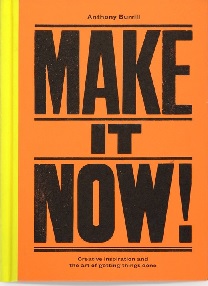 |
745.5 BUR Burrill, Anthony Make it now! : creative inspiration and the art of getting things done London : Virgin Books, [2017] Abstract Graphic artist Anthony Burrill offers a life-affirming guide to new thinking, creative problem-solving and getting things done. Full of inspiration and ideas as well as his best-loved prints and new work, this book will get you thinking bigger and better and recharge your creativity. If you’re stuck for an idea, have a big decision to handle or need a new perspective on a problem, this book offers approaches for thinking, communicating and creativity. Anyone can use this resource to help with the big and small challenges we face every day. Subject Handicraft Creative ability 43096
|
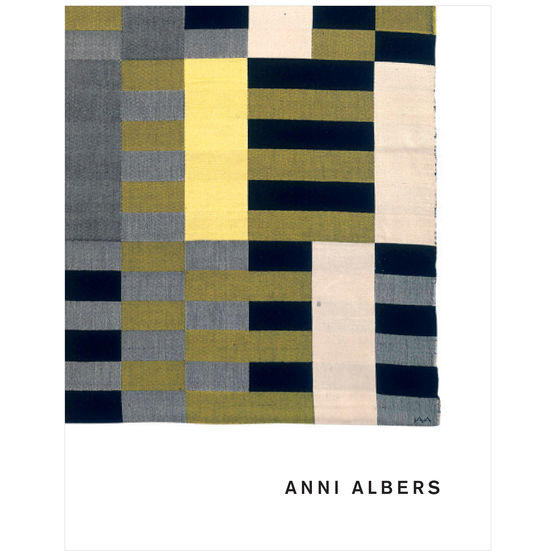 |
745.52 ANN Albers, Anni London : Tate Publishing, [2018]. Contents Anni Albers : a many-sided artist / Ann Coxon and Maria Müller-Schareck -- Close to the stuff the world is made of : weaving as a modern project / Briony Fer -- Works -- The Bauhaus workshops / Magdalena Droste -- Monumental : developing a wall covering / T’ai Smith -- Black Mountain College exercises / Briony Fer -- Discovering Monte Albán / Maria Minera -- Tangles, knots, braids, loops, and links / Brenda Danilowitz -- Anni Albers as collector / Jennifer Reynolds-Kaye -- Exhibiting textiles : MoMA 1949 / Priyesh Mistry -- The language of threads / Maria Müller-Schareck -- Temple commissions and Six prayers / Ann Coxon -- Process and metamorphosis : printmaking / Nicholas Fox Weber -- An artistic legacy / Ann Coxon. Abstract Anni Albers (1899–1994) was a German textile designer, weaver, and printmaker, and among the leading pioneers of 20th-century modernism. Although she has heavily influenced generations of artists and designers, her contribution to modernist art history has been comparatively overlooked, especially in relation to that of her husband, Josef. In this groundbreaking and beautifully illustrated volume, Albers’s most important works are examined to fully explore and redefine her contribution to 20th-century art and design and highlight her significance as an artist in her own right. Per.Sub. Albers, Anni 1899-1994 Subject Textile crafts Hand weaving -- History -- 20th century Textile design Textile design -- Influence 43101
|
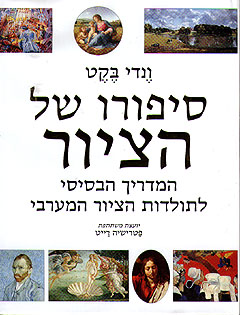 |
75.03(091) בקט בקט, ונדי 1930 סיפורו של הציור : המדריך הבסיסי לתולדות הציור המערבי אור-יהודה : הד ארצי, תשנ"ט 1999 Subject Painting -- History. Painting, European Painting, American 43059
|
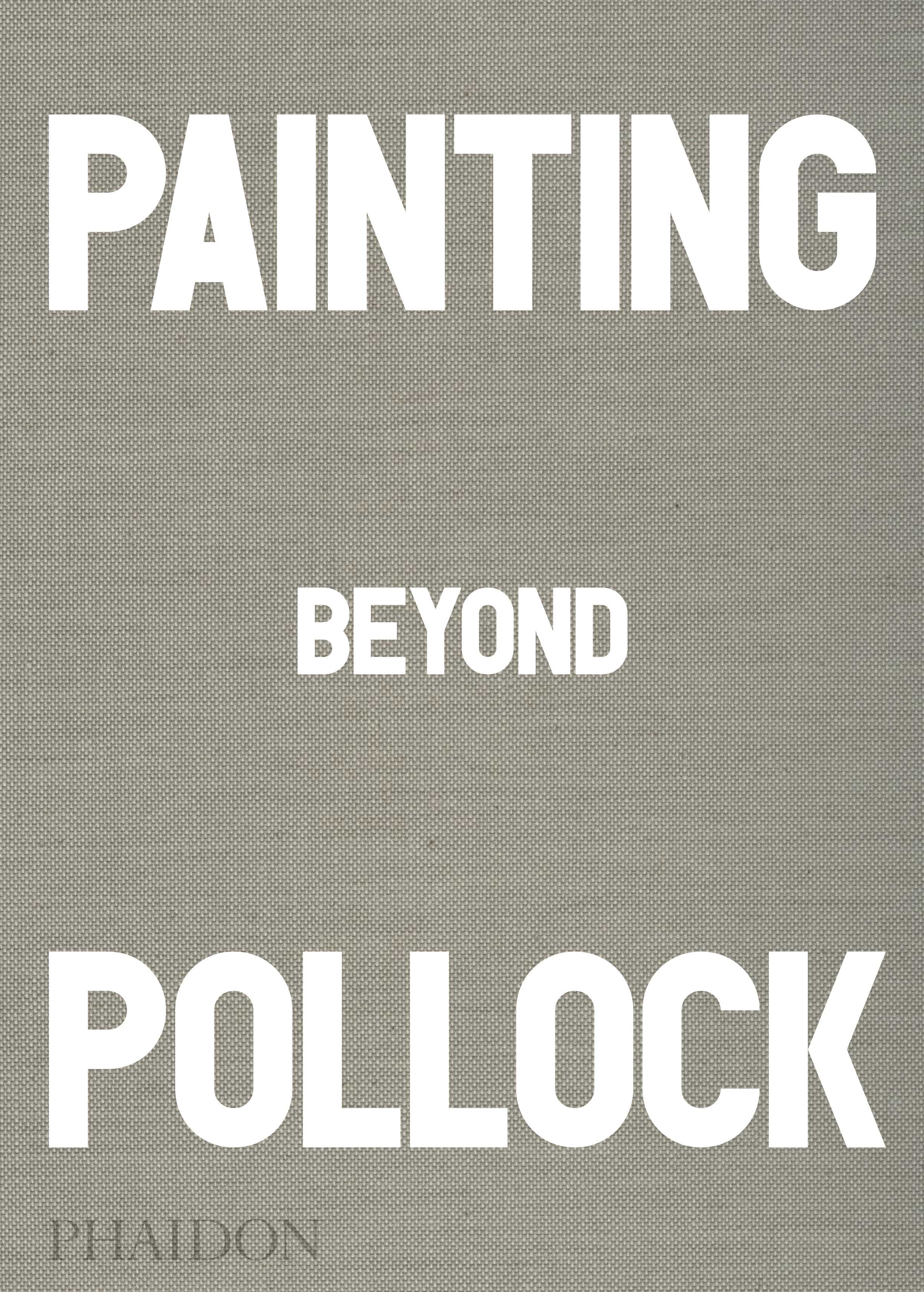 |
75.036 FAL Falconer, Morgan London : Phaidon, [2015] Contents Introduction -- Things must be pulverized: abstract expressionism -- Wounded painting: informel in Europe and beyond -- Witnesses: post-war figurative painting -- Against gesture: geometric abstraction -- Post-painting part I: after Pollock -- Anti-tradition: pop painting -- A transcendental high art: neo-expressionism and its discontents -- Post-painting part II: after pop -- New figures: pop romantics Abstract Painting Beyond Pollock is a captivating account of the history of European and American painting from the mid‐20th century onwards. Art historian and critic Morgan Falconer presents an extensively researched piece of writing that explains why painting has surged in popularity since Jackson Pollock and the Abstract Expressionists began painting in the late 1940s–early 1950s. Drawing on both original sources and contemporary scholarship, this bold and richly designed book lavishly illustrates the most important works made beginning in the Post War era. In addition to well‐known artists such as Willem de Kooning, Agnes Martin, Alex Katz, Ellsworth Kelly, Marlene Dumas, Gerhard Richter and Brice Marden, Falconer explores the work of contemporary stars such as Cecily Brown, Mark Grotjahn, Elizabeth Peyton, John Currin, Neo Rauch and Mark Bradford as well as up‐and‐coming artists such as Blink Palermo and Sigmar Polke. Topics include: •Things must be pulverized – Abstract Expressionism •Wounded Painting – Informel in Europe and Beyond •Against Gesture – Geometric Abstraction •Witnesses – Post‐war Figurative Painting •Anti&hyephn;Tradition – Pop Painting Post&hypen;Painting Part I – After Pollock •A transcendental, high art – Neo‐Expressionism and its Discontents •Post‐Painting Part II – After Pop •New Figuration – Pop Romantics Subject Painting, Modern -- 20th century -- History Abstract expressionism Art, European -- 20th century. Art, American -- 20th century. 43100
|
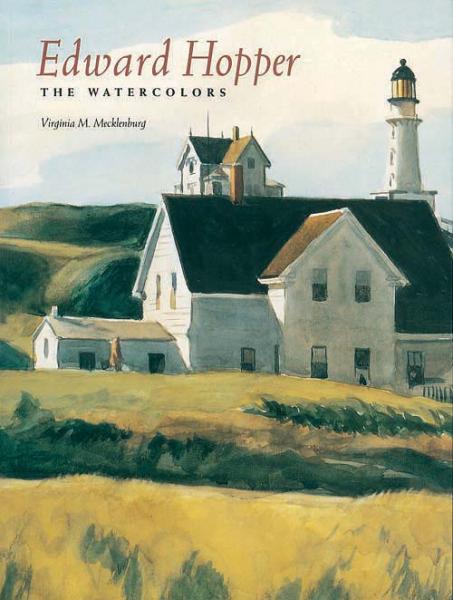 |
75.036(73) HOP (MEC) Hopper, Edward Edward Hopper : the watercolors New York : W.W. Norton, [1999] Contents Parisian evenings and New York corners -- Old houses and immigrant fishermen -- Coast Guard cottages and Civil War cannon -- Discovering Cape Cod -- Home of their own and Mexico too Abstract Edward Hopper has been celebrated for over half a century as America’s most eloquent realist artist. His best known oils, such as Nighthawks, Early Sunday Morning, and House by a Railroad, are powerful psychological statements that convey a sense of angst and alienation. Yet there is another Hopper we know less well: the freer, more spontaneous spirit that emerges in his watercolors. In 1923 he spent a summer in Gloucester, Massachusetts, and began painting houses, landscapes, and fishing boats. In them he captures remnants of nineteenth-century America that for him symbolized the fundamental character of the country’s people and places, and prompted him to reexamine his views about the relationship between the past and the modern. Over the next two decades, Hopper painted hundreds of watercolors, in Gloucester, the coast of Maine, New Mexico, and Cape Cod. This beautiful book reproduces and examines over one hundred of Hopper’s greatest watercolors in the context of his life and travels. It is an indispensable book for anyone interested in American art. 101 four-color and 40 black-and-white illustrations. 101 four-color and 40 black-and-white illustrations During the summer of 1923, Edward Hopper fled the summer heat of New York City with thousands of others. His destination was the resort town of Gloucester. It was there - perhaps inspired by the particular light and quality of the place - that he took up the medium of watercolor. It was also there that he met his future wife, fellow painter, and constant companion, Jo Nivison Per.Sub. Hopper, Edward, 1882-1967 Subject Watercolor painting, American Watercolor painting -- United States -- 20th century Painters -- United States -- 20th century 43081
|
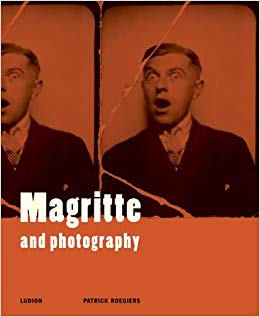 |
75.036.75(493) MAG (ROE) Magritte, Rene Ghent-Amsterdam : Distributed Art Publishers, [2005] Contents Prologue: Watch the (Real) Birdie! -- Educating the Painter (1898-1930) -- Family Photos: The Tender Secrets of Childhood -- My, How You’ve Changed, Rene! -- Georgette and Rene: A Love Story in Pictures -- Oh, My Friends, Let Us Laugh Hearty and Drink Deep! -- The Double Figure, or the Challenge to Resemblance -- The Conquest of Paris, or the Outskirts of Success -- Self-Portrait of Creation: Attempting the Impossible -- Creating the Photographer (1930-1954) -- The Return to Brussels, Georgette’s Charm -- Photography Is the Art of Disobedience: Let’s Use It for All It’s Worth -- Vacations from Life, Vacancies of Sight -- The Genius of Discoveries, the Gaiety of Rediscoveries -- Painting Put to the Test of Fixed Images -- Incarnating the Character (1955-1967) -- Commissioned Portraits, or the Irony of Fame -- Self-Portrait, or the Artist’s Face Captured in Photographs -- "We’re Not Nonexistent Enough" -- May I Take Your Portrait, Dear Rene Magritte? -- Epilogue: Please-You Look Like You’ve Just Come from a Funeral ... Abstract The sublime visions of Surrealist master Rene Magritte often began in a viewfinder. In this major study, the first of its kind, noted photography critic, author and Magritte scholar Patrick Roegiers draws eye-opening connections between the artist’s enduring paintings and his use of the emerging medium of photography, which he used as a hobby, as well as a serious component of his painting, and as an art in itself. Examining more than 200 previously unpublished photographs from Magritte’s personal collection, Roegiers finds both important source material and illuminating biographical revelations. We see here pictures of friends--including the Belgian Surrealists Scutenaire, Nouge and Mesens--and acquaintances, whom Magritte sometimes shot in stage-managed tableaux. We glimpse his family and especially his wife, muse and model Georgette, posing whimsically and earnestly, as they decamp for Paris in 1927 and return to Brussels three years later. And perhaps most vitally important to understanding Magritte’s work, his self-portraiture through photography provides crucial insight into the creation of his bowler-hatted icon and paintings such as "La Clairvoyance" from 1936. A photograph of this last work shows the artist at the easel of the famous painting of himself painting a bird. Later in life, as Magritte’s fame grew, he himself was also a subject of other photographers’ pictures, including photographs by Duane Michals on Magritte’s first trip to the United States in 1965 and by Adelaide de Menil in Texas, in which the artist amusingly trades his bowler for a Stetson. This clear-eyed, all-encompassing look at what Magritte saw through the camera, and what he did in front of it, adds substantially to our appreciation of the artist who gave us the eye of "Le Faux Miroir." Per.Sub. Magritte, Rene, 1898-1967 Magritte, Rene 1898-1967 -- Portraits Magritte, Rene 1898-1967 -- Criticism and interpretation Subject Painting, Belgian 20th century -- 20th century Photography, Artistic Art and photography 43082
|
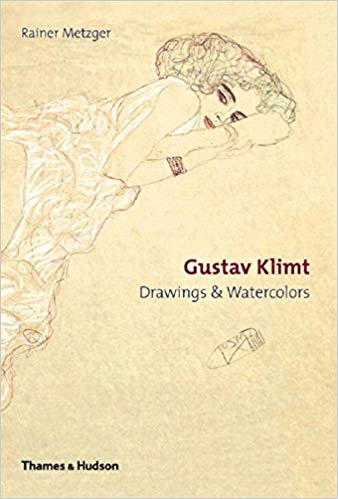 |
75.036.93(436) KLI (MEZ) Klimt, Gustav Gustav Klimt : drawings & watercolors London : Thames & Hudson, [2005] Contents Vienna and the world: the great inconsistency -- Klimt’s historicism: the graphic works before 1899 -- The secession principle: naked truth and truthful nakedness -- Klimt’s naturalism: the graphic works 1899-1910 -- Abstraction and empathy: Klimt’s art of decoration -- Seeing and being seen: through Klimt’s eyes -- Klimt’s modernism: the graphic works 1910-18 -- The self and the ego: Klimt, Schiele, Kokoschka -- Klimt and art: the little that is much Abstract There is no doubt about Gustav Klimt’s greatness as a draftsman. Remarkable above all is the intensely sensual mood that he establishes in his limpid, fluid drawings and watercolors: the pencil or crayon line with which his subjects are described explores and caresses as though the act of drawing was itself a seduction. Klimt’s drawings are often highly erotic and explicit, many to such an extent that they have rarely been reproduced. This has made for an unbalanced representation of his work as a draftsman, and a comprehensive survey of his graphic output is long overdue. Rainer Metzger, a noted art historian, has brought together hundreds of Klimt’s drawings and watercolors in a way that enriches our knowledge of the artist and enhances the visual impact of his oeuvre. Klimt’s drawings and studies, and his elegantly direct and dangerously intoxicating preparatory sketches, reveal the underlying impetus for and structure of his elaborate canvases. 307 color illustrations. Per.Sub. Klimt, Gustav 1862-1918 Klimt, Gustav 1862-1918 -- Criticism and interpretation Subject Painters -- Austria -- 20th century. Drawing, Austrian -- 20th century Watercolor painting -- Austria -- 20th century 43083
|
 |
75.036(569.4) קסט (עפר) [תל-אביב] : קרן לוין לאמנות ישראלית, [2019] Abstract קסטל נולד בירושלים לרב יהודה קסטל ולרחל בת יוסף אנקונה.(משפחתו הספרדית הגיעה לארץ מקסטיליה בשנת 1492). הוא למד בבצלאל בין השנים 1922 ו-1925. בהיותו בן 13 התקבל ללימודים בבית הספר לאמנות "בצלאל" בניהולו של בוריס שץ. הוא למד בו שלוש שנים מ- 1921 עד 1925. הוא היה צייר מוכשר וציוריו הוצגו בתערוכת אמני ארץ ישראל, שהתקיימה במגדל דוד בירושלים. הלימודים ב"בצלאל" לא סיפקו למשה קסטל הצעיר את הידע הטכני שחפץ בו, בעיקר, ציור בצבעי שמן. הצייר שמואל בן דוד, שהיה מורהו של קסטל ואהוב עליו מאד, הפציר בו לנסוע לפריס. לאחר מכן למד באקדמיה ז’וליאן ובאקול דה לובר בפריז. קסטל חזר לישראל וגר בצפת ב-1940 והחל מתקופה זו ועד לאחרית ימיו הושפע רבות מן הרוח המיסטיקנית היהודית. קסטל היה אחד ממייסדי אופקים חדשים ב-1947 ביחד עם מרסל ינקו, יחזקאל שטרייכמן ואחרים, ובמהלך השנים יצר ציורי קיר ותבליטים במקומות שונים בארץ ומחוצה לה. כמו כן זכה בפרסים רבים והציג תערוכות רבות. בין השנים 1925-1940 ישב רוב הזמן בפריז. יצירותיו המוקדמות היו בעלות אופי אורינטלי בשנות הארבעים, כאשר התגורר בצפת, וידו רבה בהקמת קריית האמנים צפת עם שוך קרבות תש"ח, היו תמונותיו אפופות אוירה מיסטית וניכרה בהן השפעתה של אסכולת פריז. בהמשך דרכו האמנותית, נטה לעבר המופשט והאמנות הכנענית ועיצב סמלים צורניים כמו ציור הקיר במלון "דן אכדיה" בהרצליה ותבליטי הקיר במשכן נשיאי ישראל בירושלים. נפטר בתל אביב בשנת 1991 Per.Sub. Castel, Moshe, 1909-1991 Subject Art, Israeli -- 20th century Painters -- Israel -- 20th century 43058
|
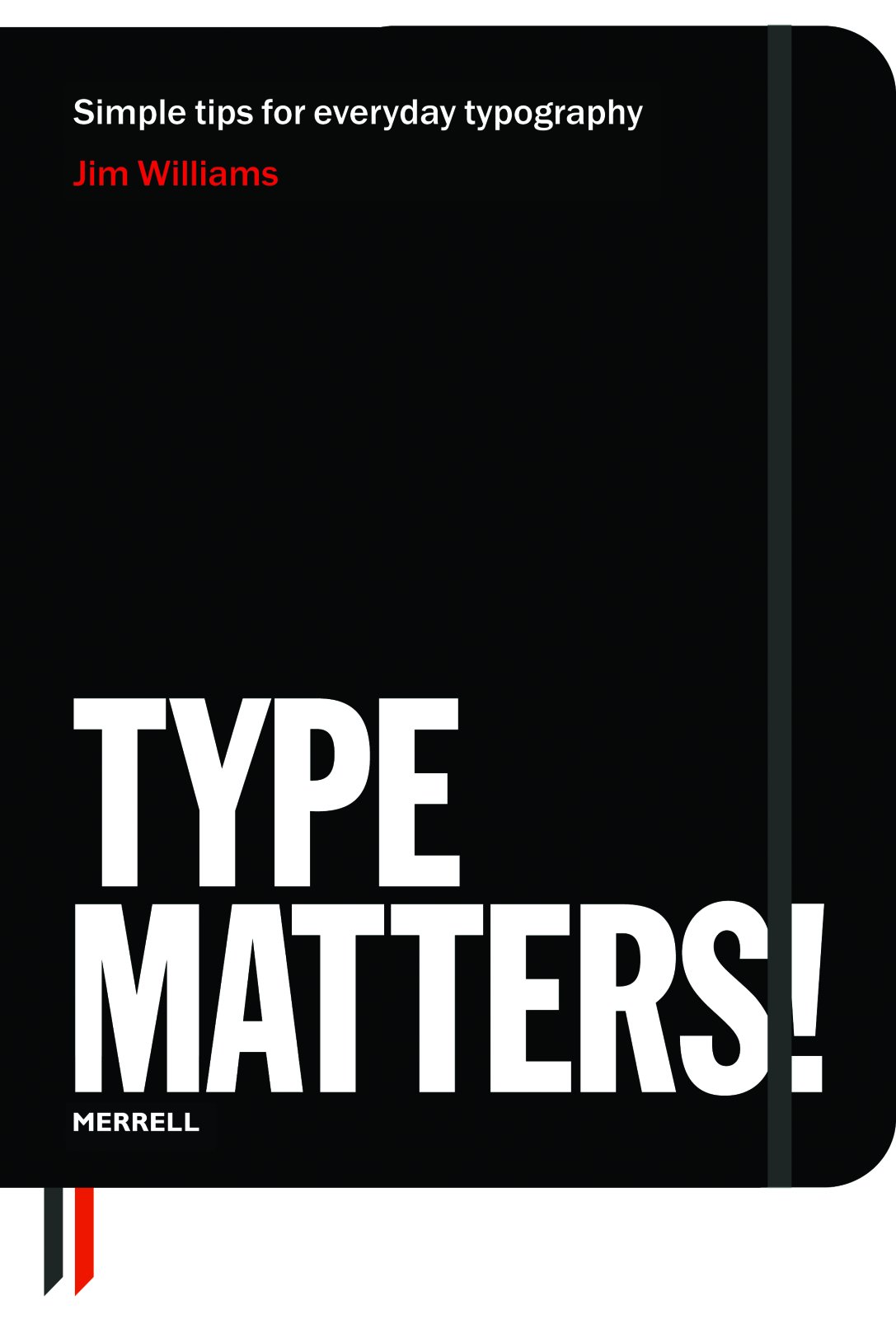 |
76.026 WIL Williams, Jim London : Merrell, [2012] Contents Background : A brief history of type design ; The origins of typographic terminology ; Type measurement ; Roman type ; The anatomy of letterforms ; Why some typefaces look bigger ; Type families -- Setting headlines and display type : Selecting a typeface ; Headlines and display type ; Shape ; Hanging punctuation ; Visual centring ; Tittle, or ’i’ and ’j’ dot ; Ink traps -- Text setting : Selecting a typeface ; Leading ; Size to measure ; Kerning ; Figures ; Letter spacing ; Colour ; Legibility and readability ; Shape ; Alignment ; Indicating paragraphs ; Numbers in text ; Emphasis in text ; Hanging punctuation ; Clash ; Hyphenation ; Widows and orphans ; Apostrophes and quotation marks ; Ligatures ; Ampersands ; Diphthongs ; Raised or drop capitals ; Capitals and small capitals ; Scripts ; Parentheses ; Email addresses ; Three rules ; Titling typefaces ; Reader’s marks -- Glossary of terms Abstract Once upon a time, only typesetters needed to know about kerning, leading, ligatures, and hanging punctuation. Today, however, most of us work on computers, with access to hundreds of fonts, and we’d all like our letters, reports and other documents to look as good - and as readable - as possible. But what does all the confusing terminology about ink traps, letter spacing, and visual centring mean, and what are the rules for good typography? Type Matters! is a book of tips for everyday use, for all users of typography, from students and professionals to anyone who does any layout design on a computer. The book is arranged into three chapters: an introduction to the basics of typography; headline and display type; and setting text. Within each chapter there are sections devoted to particular principles or problems, such as selecting the right typeface, leading, and the treatment of numbers. Examples throughout show precisely what makes good typography - and, crucially, what doesn’t. Authoritatively written and designed by a practitioner and teacher of typography, Type Matters! has a beautifully clear layout that reinforces the principles discussed throughout Subject Graphic design (Typography) Type and type-founding Graphic arts Lettering Signs and signboards 43046 |
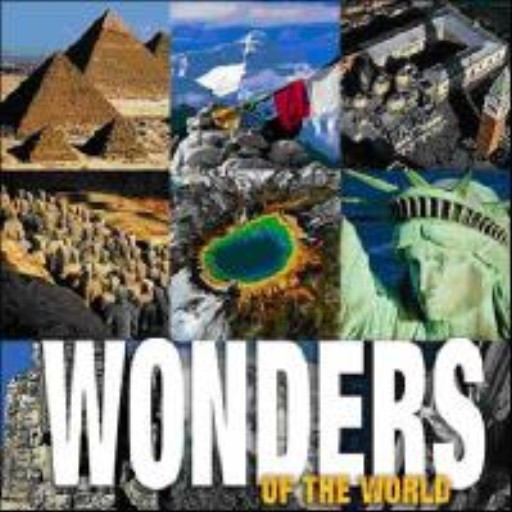 |
77.04(02) WON Vercelli, Italy : White Star Publishers, [2008] Subject Photography Nature photography Landscape photography Curiosities and wonders -- Pictorial works. Landforms -- Pictorial works Nature -- Pictorial works Architecture -- Pictorial works. 33088
|
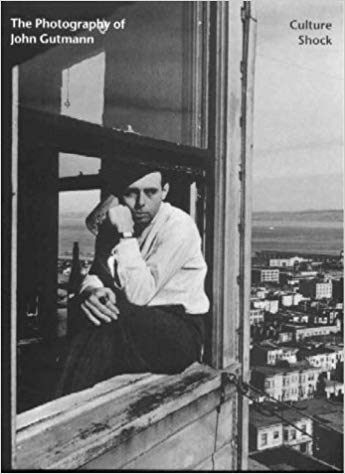 |
77.04 GUT (PHI) Gutmann, John The photography of John Gutmann : culture shock London : Merrell in association with the Iris & B. Gerald Center for Visual Arts at Stanford University, 2000 Abstract This retrospective volume traces Gutmann’s career from his training as a painter in Germany, first under renowned Expressionist Otto Muller, then in the wild, decadent Berlin of the 1930s, through his resolution to leave during Hitler’s ascent to power, to his decision to settle in San Francisco. As a Jew, Gutmann was forbidden by the Nazis to exhibit or teach; photojournalism struck him as a useful means of supporting himself as a refugee. He had no training as a photographer and no interest in the medium as a pure art form, but he was fascinated by the popular culture of photography in magazines. Bringing to San Francisco the eye for the bizarre that he had developed in recording the vibrant, cosmopolitan life of Berlin - an eye further sensitized by his status as an exile in a strange country - Gutmann photographed the odd, the morbid, and the freakish with the detachment of an anthropologist examining an exotic culture A compilation of photographs taken by John Gutmann captures the social turbulence in the 1930s, 1940s, and 1950s Per.Sub. Gutmann, John 1905-1998 Subject Photography, Artistic Photographers -- United States -- Biography. Black-and-white photography 43080
|
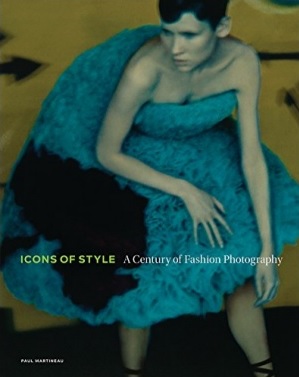 |
77.041.6 ICO Icons of style : a century of fashion photography Los Angeles : J. Paul Getty Museum, [2018]. This publication accompanies the exhibition Icons of Style: A Century of Fashion Photography, 1911-2011, on view at the J. Paul Getty Museum at the Getty Center, Los Angeles, from June 26 to October 21, 2018"--Colophon. Contents Foreword / Timothy Potts -- Introduction / Paul Martineau -- Fashion, photography, culture : a chronology -- From contrivance to "naturalism," 1911-29 / Anne McCauley -- Style in the face of crisis, 1930-46 / Paul Martineau -- Letting the skirts down, 1947-69 / Susanna Brown -- From rebellion to seduction, 1970-89 / Michal Raz-Russo -- Ye fakers : realism and fantasy, 1990-2011 / Ivan Shaw. Abstract In 1911 the French publisher Lucien Vogel challenged Edward Steichen to create the first artistic, rather than merely documentary, fashion photographs, a moment that is now considered to be a turning point in the history of fashion photography. As fashion changed over the next century, so did the photography of fashion. Steichen’s modernist approach was forthright and visually arresting. In the 1930s the photographer Martin Munkácsi pioneered a gritty, photojournalistic style. In the 1960s Richard Avedon encouraged his models to express their personalities by smiling and laughing, which had often been discouraged previously. Helmut Newton brought an explosion of sexuality into fashion images and turned the tables on traditional gender stereotypes in the 1970s, and in the 1980s Bruce Weber and Herb Ritts made male sexuality an important part of fashion photography. Today, following the integration of digital technology, teams like Inez & Vinoodh and Mert & Marcus are reshaping our notion of what is acceptable—not just aesthetically but also technically and conceptually—in a fashion photograph. This lavishly illustrated survey of one hundred years of fashion photography updates and reevaluates this history in five chronological chapters by experts in photography and fashion history. It includes more than three hundred photographs by the genre’s most famous practitioners as well as important but lesser-known figures, alongside a selection of costumes, fashion illustrations, magazine covers, and advertisements. Subject Fashion photography -- History -- 20th century Photography, Artistic 43084
|
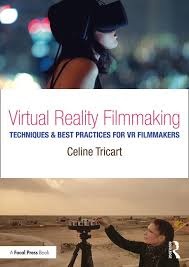 |
791.43 TRI Tricart, Celine Virtual reality filmmaking : techniques & best practices for VR filmmakers New York and London : Routledge, Taylor & Francis Group, [2018]. Contents Introduction and definitions -- Part I. Theoretical and technical foundations : History of VR / with Eric Kurland -- Live action VR capture and post-production -- Game engines and interactive VR -- VR headsets and other human-VR interfaces -- Part II. Virtual reality storytelling : VR: a new art? -- VR as a storytelling tool -- Make a film in VR from start to finish -- The future of VR: Conclusion. Abstract Virtual Reality Filmmaking presents a comprehensive guide to the use of virtual reality in filmmaking, including narrative, documentary, live event production, and more. Written by Celine Tricart, a filmmaker and an expert in new technologies, the book provides a hands-on guide to creative filmmaking in this exciting new medium, and includes coverage on how to make a film in VR from start to finish. Topics covered include: •The history of VR; •VR cameras; •Game engines and interactive VR; •The foundations of VR storytelling; •Techniques for shooting in live action VR; •VR postproduction and visual effects; •VR distribution; •Interviews with experts in the field including the Emmy-winning studios Felix & Paul and Oculus Story Studio, Wevr, Viacom, Fox Sports, Sundance’s New Frontier, and more. Subject Motion pictures -- Technological innovations. Motion pictures -- Production and direction. Virtual reality Digital cinematography 43109
|
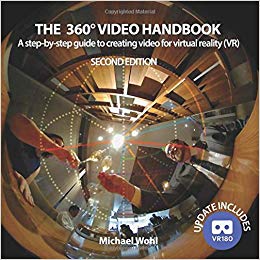 |
791.43 WOH Wohl, Michael Los Angeles, California : Vrrrynice.com, [2019]. Contents Part I: Preparing to shoot -- Part II: Production -- Part III: Post production -- Part IV: Finishing. Abstract The 360° Video Handbook (2nd Edition) is a practical hands-on guidebook for producers, directors, cinematographers, sound recordists, and editors interested in creating 360-degree video and VR180 video. It covers every aspect of the spherical video pipeline, from development, to production, to editing and finishing, to outputting and distributing your final piece. While you can read it front-to-back, it’s also designed to be used as a handy reference. Each topic is contained in a succinct, easy-to-understand chapter, the different sections are color coded so you can flip right to the section you want, and technical terms and obscure terminology is defined right in the margins. Wohl courses an easy-to-follow trail through the thicket of technobabble and jargon. The book provides nuts-and-bolts recommendations on everything from the selection of cameras, microphones, and editing tools, to aesthetic and creative decisions such as camera placement and blocking, as well as editing, incorporating titles, transitions, and other effects. And finally, he provides detailed instructions for how to output your finished work, and where to upload it to reach the maximum audience. “Michael Wohl did a fantastic job with The 360° Video Handbook. He covers the current—and ever changing—state of the art, provides enough detail to be practical, presents a balanced view where there are differing opinions, and avoids getting bogged down in technical minutia. I haven’t come across a similar resource, and it’s a book that will be very easy to recommend.”— Mike Swanson, Pixvana Subject Video recordings -- Production and direction. Digital media 43107
|
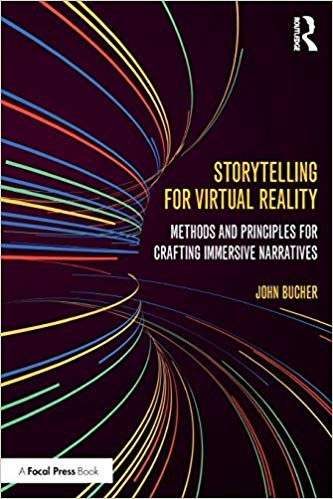 |
808.543 BUC Bucher, John Storytelling for virtual reality : methods and principles for crafting immersive narratives New York and London : Routledge, Taylor & Francis Group, [2018]. Contents Foreword / Ted Schilowitz -- A new reality and how we got here : Spotlight on directing: Storytelling VR through cinematic directing ; A conversation with Jessica Brillhart, Google -- Spotlight on cameras: Storytelling in VR through the lens ; A conversation with Paul Meyhoefer, JK Imaging/Kodak -- A stone bridge covered in microchips : Spotlight on gaming: Storytelling in VR through video games ; A conversation with Brian Allgeier, Insomniac Games -- Science and technology behind storytelling : Spotlight on VR science and storytelling: Storytelling through data and neurology ; A conversation with Dr. Carolina Cruz-Neira, Emerging Analytics Center, The University of Arkansas, Little Rock ; Spotlight on story: Storytelling at the Oculus Story Studio ; A conversation with Jessica Shamash and Pete Billington, Immersive Storyteller -- Storytelling principles for immersive space : Spotlight on immersive theater: Storytelling through immersion ; A conversation with Noah Nelson, No Prescenium Podcast -- Designing an immersive narrative : Spotlight on new frontiers: A master storyteller ; A conversation with Chris Milk, Within -- Spotlight on ethics: Considerations for VR storytelling ; A conversation with Steve Peters, StoryForward Podcast and Mo Mimes Media -- Characters in VR : Spotlight on acting: Storytelling through drama in immersive experiences ; A conversation with Keight Leighn -- Creative narrative structures : Spotlight on visualization: Cinematic storytelling in VR ; A conversation with Chris Edwards, The Third Floor -- Spotlight on narrative: Fiction versus nonfiction storytelling ; A conversation with Steve Peters, StoryForward Podcast and Mo Mimes Media -- Theory in practice: interview and case studies : The storytellers : Interview: Rob Bredow, LucusFilm ; Interview: Tye Sheridan and Nikola Todorovic, Aether Inc. ; Case study: Baobab VR Studios ; Interview: Sarah Hill, StoryUp --The technologists and produc Abstract Storytelling for Virtual Reality serves as a bridge between students of new media and professionals working between the emerging world of VR technology and the art form of classical storytelling. Rather than examining purely the technical, the text focuses on the narrative and how stories can best be structured, created, and then told in virtual immersive spaces. Author John Bucher examines the timeless principles of storytelling and how they are being applied, transformed, and transcended in Virtual Reality. Interviews, conversations, and case studies with both pioneers and innovators in VR storytelling are featured, including industry leaders at LucasFilm, 20th Century Fox, Oculus, Insomniac Games, and Google. Subject Storytelling Mass media -- Authorship. Virtual reality Narration (Rhetoric) 43108
|
- כתבות, חדשות ואירועים



